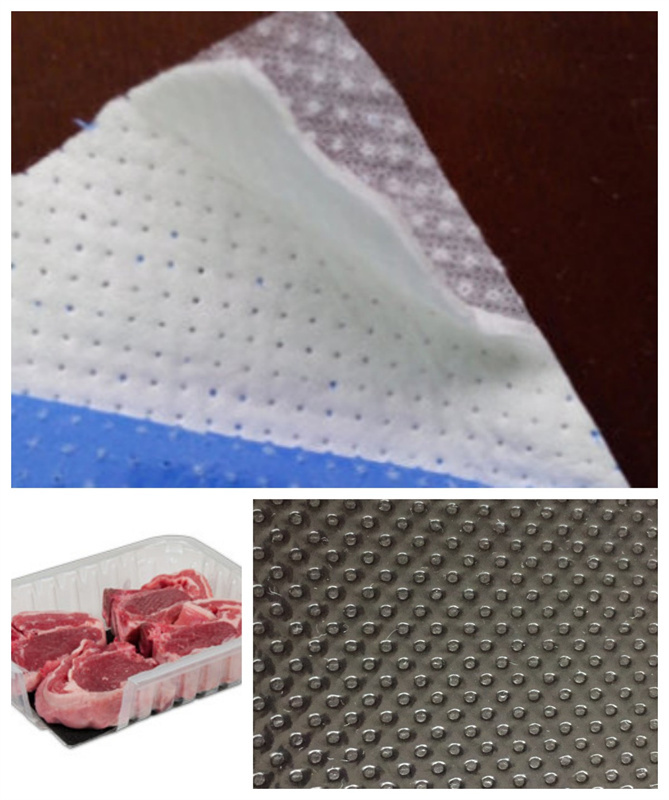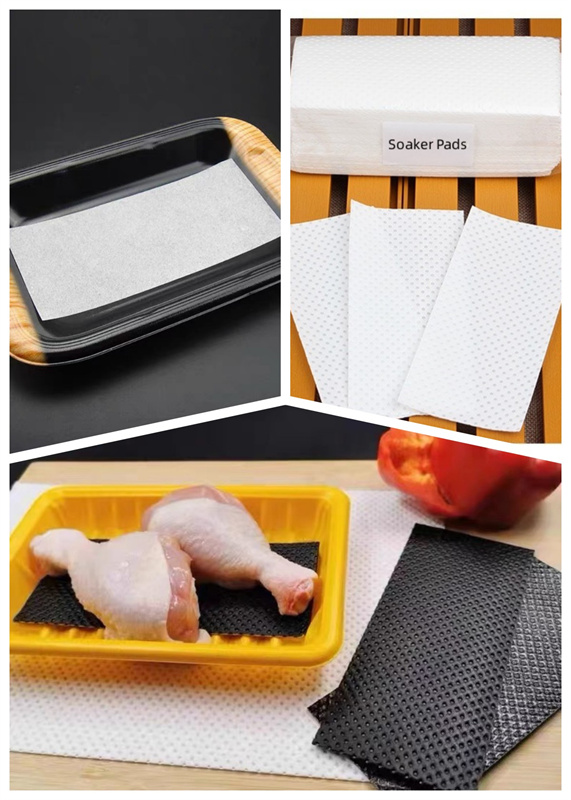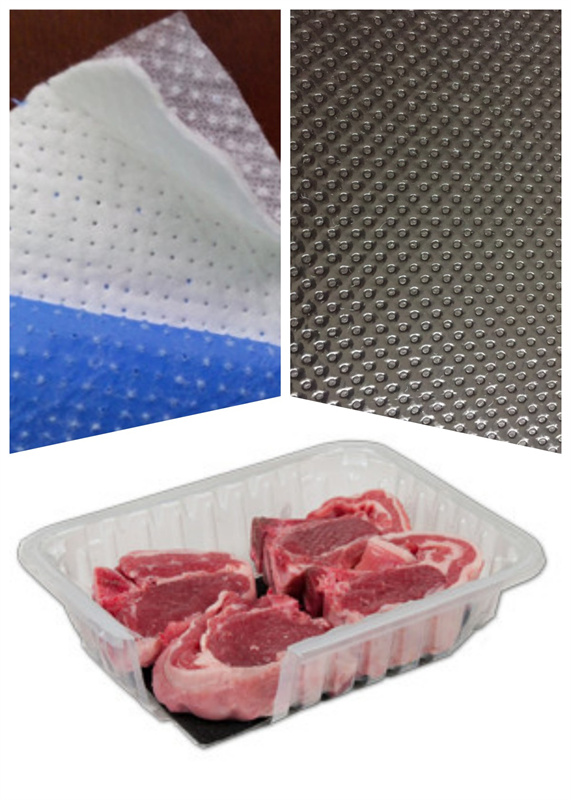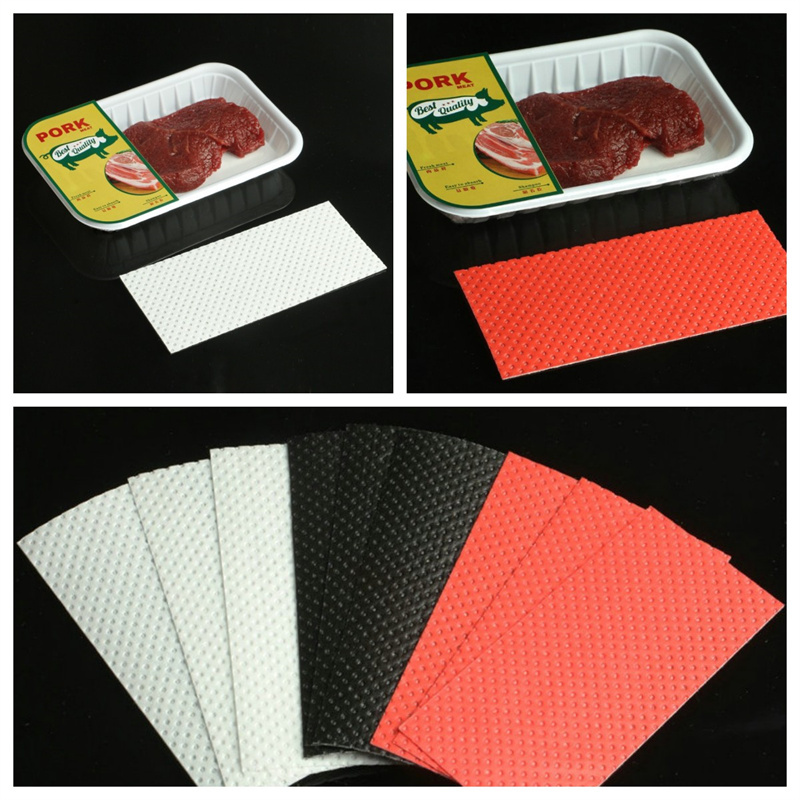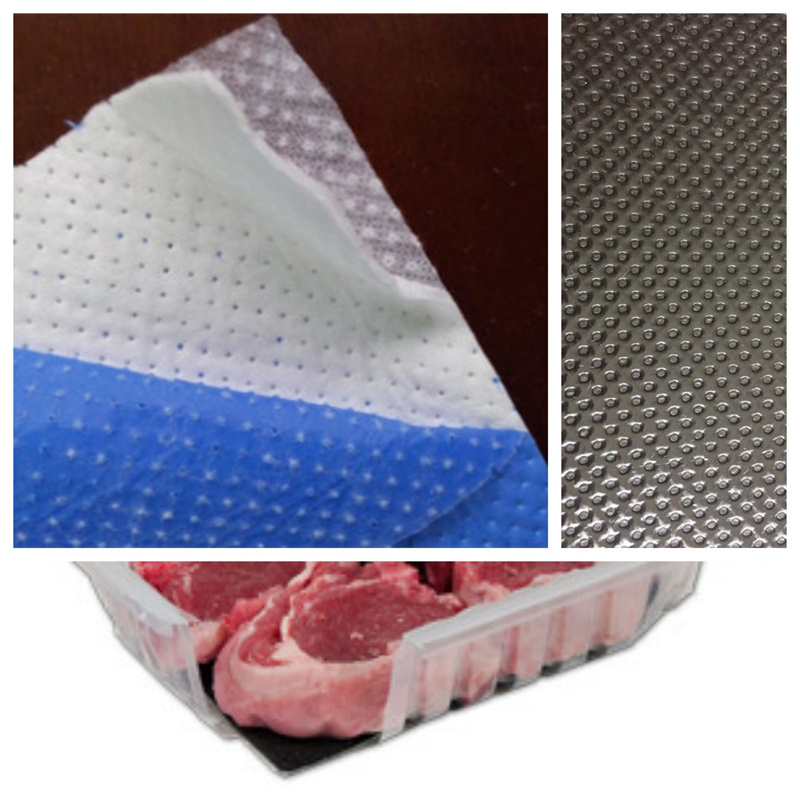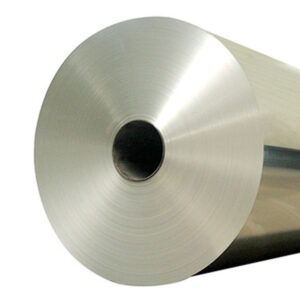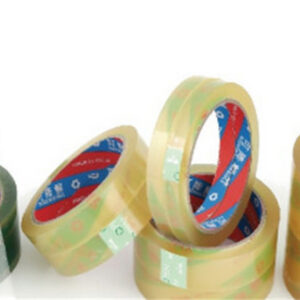About Soaker Pads
Meat soaker pads, disposable products, are commonly used in food transportation and preservation. Made of polyethylene (PE) and air-laid, it exhibits good water absorption and fresh-keeping effects. This article will introduce in detail the principle, characteristics, uses and environmental protection considerations of food fresh absorbent mats.
Principle and Characteristics
Meat soaker pad uses polyethylene (PE) as the cover material, polyethylene is a thermoplastic resin with strong plasticity, good toughness, and stability. Meanwhile, it is lint-free. The pads will absorb the excess liquid from the fresh food, and lock it inside the pad. It plays the role of freshness, moisture absorption, anti-slip, and so on.
Characteristics of soaker pads:
- Good water absorption: Due to the microporous structure on the surface of the absorbent pad, it can quickly absorb water or liquid, lock it inside the pad, and avoid food from moisture, deterioration, or slippage.
- Excellent fresh-keeping effect: the absorbent pad can absorb moisture let out from the food. While it won’t absorb actively. This reduces the moisture loss of the food and extends the shelf life of the food. At the same time, the absorbent pad can also effectively block the contact between food and outside air, and maintain the freshness and taste of food.
- Anti-slip performance: The soft structure of the absorbent pad can increase the friction with the food or container, improve the stability of the food transportation process, and avoid the food from slipping, colliding, or dumping during transportation.
- Hygiene and safety: Meat soaker pads are disposable items that individuals can discard directly after use, thereby avoiding the risk of secondary pollution. Moreover, the polyethylene (PE) material itself meets the food hygiene standards and will not produce any harmful substances in the food.
Uses of Soaker Pad
The food industry widely utilizes food fresh absorbent mats in various aspects, primarily encompassing the following areas:
- Food transportation: During food transportation, placing absorbent pads prevents slippage, absorbs moisture, and preserves freshness in packaging containers. It absorbs the moisture generated during transportation and keeps the food dry and fresh.
- Cold chain logistics: In cold chain logistics, absorbent mats can be used to protect moisture-prone products such as frozen foods, fruits, and vegetables. It absorbs condensate generated on the surface of frozen food and prevents damage to the quality of food during the freezing process.
- Absorbent mats enhance food freshness and product display when used in food display cabinets, aquatic markets, and other settings, where food is placed on them.
- Absorbent mats in vegetable and fruit storage reduce moisture, prevent rot, and extend shelf life.
- Cooking processing: Absorbent mats in food cooking maintain ingredient texture, and taste, and enhance cooking by regulating humidity.
Environmental Considerations
Although food fresh absorbent mats are disposable, we should still consider environmental factors and take appropriate disposal measures during use.
- After use, individuals should separate the absorbent mat from other garbage and recycle it. According to local waste sorting regulations, they should place it in the appropriate recycling bins or recycling bags.
- Environmentally friendly material selection: In the production process, you can choose to use degradable or recyclable materials to make absorbent pads to reduce environmental impact.
- When using food fresh absorbent pads, individuals should use them in a reasonable quantity based on their actual needs to prevent waste.
- Promote environmentally friendly alternatives: Under the premise of maintaining the function of absorbent pads, encourage the development and promotion of more environmentally friendly alternatives, such as absorbent pads made of degradable materials, to reduce environmental impact.
Keep Food safety and hygiene
The food industry recognizes the importance of food safety and hygiene as crucial concerns. Food fresh absorbent mats are manufactured using safe polyethylene (PE) and dust-free paper, meeting food hygiene standards and excluding harmful substances. This means that when using absorbent pads, there will be no contamination or harmful effects on food, ensuring the quality and safety of food.
In addition, users can discard the absorbent pad directly after use without the need for cleaning, thus avoiding the risk of secondary pollution. This also provides a convenient and hygienic solution for the food industry.
Diversity and customization of Soaker Pad
Manufacturers design and manufacture food fresh absorbent mats with a certain degree of flexibility. Based on different food types, specifications, sizes, water absorption requirements, and color preferences, companies can customize various absorbent pads. For example, for different types of foods such as meat, fruits, and vegetables, you can choose the corresponding absorbency to meet the preservation and moisture. Moreover, you can even choose colors to match the food, and show the food better.
Economic benefits and efficiency gains
The use of food-fresh absorbent pads can bring economic benefits and improve work efficiency. First of all, the absorbent pad can extend the shelf life of food. So, it reduces the loss of food deterioration and reduces the operating cost of fresh food. Secondly, the absorbent pad can prevent the sliding and collision of food during transportation and storage, reduce food damage, and improve logistics efficiency.
Absorbent pads reduce food moisture loss, maintain quality, appearance, and taste, and enhance product value. This has a positive impact on improving the competitiveness and market share of enterprises.
Precautions and storage methods
When using meat soaker pads, you need to pay attention to the following points:
- Make sure the absorbent pad is dry: before use, make sure that the absorbent pad is in a dry state to ensure its normal water absorption performance.
- Reasonable use of quantity: according to the type, quantity, and demand of food, rationally use absorbent mats to avoid waste.
- No special storage requirements for absorbent pads, as they are chemical-free and glue-free, ensuring no harmful substances or gases. However, it should be noted that exposure to direct sunlight can cause the PE film to become discolored.
- After use, individuals should separate the absorbent mat from other waste and recycle it appropriately to minimize its environmental impact.
Meat soaker pads are essential in the food industry, offering water absorption and freshness benefits as disposable products. Food fresh absorbent mats ensure freshness, efficiency, safety, and quality, benefiting the economy and hygiene. Prioritize environmental protection when using absorbent pads, practicing responsible use and disposal for sustainability.

